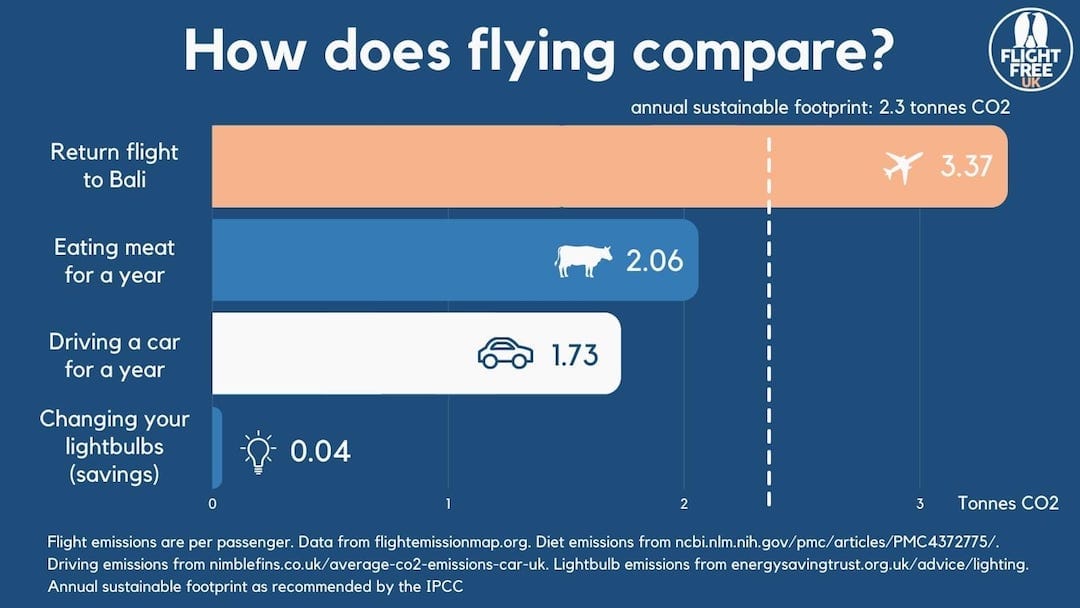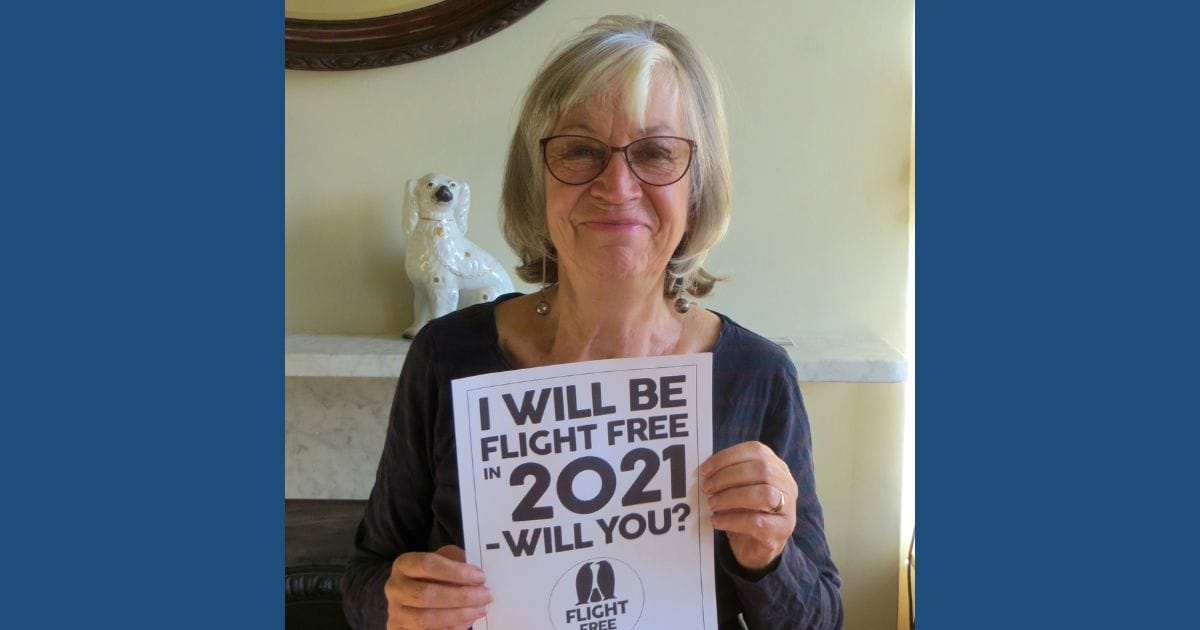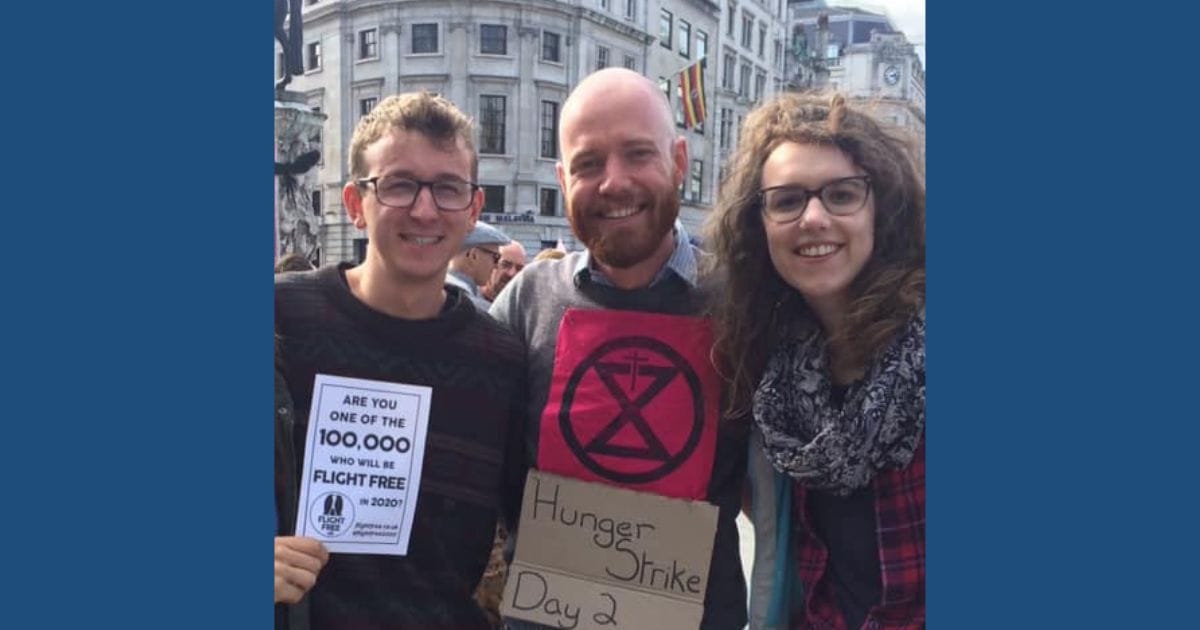We know that burning fossil fuels is causing the planet to warm, and scientists agree that we need to reduce our CO2 emissions if we are to avoid the worst impacts of climate breakdown.
There are lots of things that we as individuals can do to reduce emissions, including changing the way we eat, clothe ourselves and heat our homes.
Taking a flight can often wipe out any savings made elsewhere. While aviation is responsible for only a small proportion of global emissions, that’s because globally, hardly anyone flies. When we look on an individual level, it’s much higher.

For example, a long haul flight to Indonesia generates more emissions per passenger than eating meat for a year or driving your car for a year.
Other comparisons:
- Heating your home for a year: 2.7 tonnes CO2 = a return flight to LA (2.69 tonnes CO2)
- Eating meat for a year: 2.06 tonnes CO2 = a return flight to Mumbai (2 tonnes CO2)
-
Driving a car for a year: 1.73 tonnes CO2 = a return flight to New York (1.75 tonnes CO2)
~ see bottom of page for links and a breakdown of the calculations
When we consider that the recommended sustainable footprint is just 2.3 tonnes per year, we quickly see that there simply isn’t any room for flights once we have included the things that are essential to living, such as food, shelter and warmth.
If we are to move to a low-carbon society, cutting out non-essential sources of emissions will be vital, and for most people, that’s flights.
Non-CO2 emissions
CO2 is responsible for only about a third of aviation's warming effect. Non-CO2 emissions such as nitrous oxide and water vapour in the form of contrails make up the rest.
Emissions at altitude have more of a warming effect than emissions at ground level, meaning that aviation's contribution to global warming is higher than the CO2 emissions alone.
Global climate justice
The communities around the world that have done the least to cause the climate crisis are the ones suffering the most, and this injustice is even more stark when it comes to aviation.
Only around 10% of the global population flies in any given year and 1% of people produce 50% of aviation emissions, yet we all suffer the consequences of rising greenhouse gas emissions.
What about travel?
Some people argue that the benefits of flying outweigh the harm, because travel gives us so much. That is true – travel does give us a lot of benefits – but it’s also true that travel and tourism can be extractive rather than beneficial to the places we go to.
Not flying doesn’t mean not travelling, and there are plenty of places we can still access without getting on a plane, and have a much more enriching experience doing it. See our Destination Inspiration pages for ideas.
Emissions calculations
- According to this article, a medium meat eater generates 5.63kg CO2 per day through their diet, making 2.06 tonnes per year (we chose ‘medium meat eater’ rather than ’high’ or ’low’ because according to this BBC article from 2019, the average person eats 85g meat per day, which falls into the ‘medium meat eater’ bracket).
- Emissions from heating your home for a year come from Citu.
- Flight emissions data is from flightemissionmap.org
- Driving data is from nimblefins.co.uk
All sources accessed 2nd February 2021




